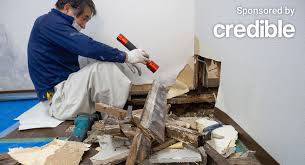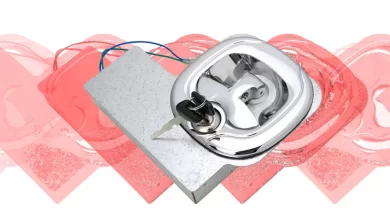Environmental Impact of Water Damage: What Homeowners Should Know

When faced with water damage in Vancouver, you can get structural and health risks and significant environmental implications. Understanding the broader environmental impact of water damage can help homeowners make more informed decisions regarding restoration and waste management. We will explore the potential environmental consequences of water damage, handling hazardous materials, and implementing sustainability practices during restoration.
Introduction to Environmental Concerns
Broad Implications of Water Damage
When water damage occurs, it affects more than just the immediate area of your home. The consequences can extend to the local environment, affecting water quality, soil stability, and local ecosystems. Understanding these impacts can guide homeowners in choosing environmentally responsible actions during cleanup and restoration.
Importance of Sustainable Restoration Practices
Sustainable restoration practices benefit the environment and can be economically advantageous for homeowners. By using green materials and methods, homeowners can reduce their environmental footprint while potentially improving their home’s efficiency and reducing future damage risks.
Environmental Risks Associated with Water Damage
Contamination and Pollution
Water damage often involves water contaminated with chemicals, biological pathogens, or hazardous materials. If not properly handled, this water can seep into the ground, contaminate local water supplies, or harm wildlife. Proper cleanup and disposal of contaminated water are crucial to preventing environmental damage.
Waste Management Challenges
The aftermath of water damage typically results in significant amounts of waste, including damaged household items, building materials, and sometimes hazardous waste. Disposing of this waste improperly can lead to environmental pollution. Homeowners should be aware of local regulations on waste disposal and seek to recycle materials whenever possible.
Impact on Local Ecosystems
Water damage can disrupt local ecosystems, particularly if the damaged property is near natural water bodies or wetlands. Introducing pollutants and unnatural materials into these environments can harm local flora and fauna. Careful management of the cleanup process is necessary to minimize these impacts.
Handling Hazardous Materials
Identification of Hazardous Materials
During the cleanup process, it’s important to identify any hazardous materials that may have been involved in or affected by the water damage. Common hazardous materials include asbestos, lead-based paints, and chemical solvents. Professional assessment is often necessary to handle these materials safely.
Safe Disposal of Hazardous Waste
Once identified, hazardous waste must be handled and disposed of according to local and federal regulations. This may involve coordinating with specialized waste disposal services to ensure that these materials do not pose a further risk to the environment or human health.
Best Practices for Hazardous Materials Management
Implementing best practices for managing hazardous materials includes training for those involved in the cleanup process and using appropriate protective gear. Clear guidelines should be followed to prevent any unintentional release of hazardous substances into the environment.
Sustainability Practices in Water Damage Restoration
Use of Green Building Materials
Opting for green building materials can significantly reduce the environmental impact of restoration. Materials such as recycled, reclaimed, or sustainably sourced wood products, low-VOC (volatile organic compounds) paints, and energy-efficient fixtures contribute to a healthier environment.
Energy Efficiency and Water Conservation
Restoration presents an opportunity to improve the energy efficiency of your home. Installing energy-efficient windows, insulation, and water-efficient fixtures helps the environment and reduces utility bills.
Long-Term Sustainability Planning
Incorporating sustainability into the restoration process involves more than just using green materials. It includes designing a resilient home against future water damage, potentially incorporating improved drainage systems, native landscaping to reduce water runoff, and barriers to protect against flooding.
Encouraging Biodiversity Through Landscaping
Post-water damage restoration offers a unique opportunity to enhance the biodiversity of a property through thoughtful landscaping. Homeowners can choose native plants that are adapted to local environmental conditions and require less water, reducing runoff and improving soil stability. This approach helps create a more sustainable landscape and supports local wildlife, providing habitats and food sources. Additionally, incorporating rain gardens, permeable pavements, and other green infrastructure can help manage stormwater naturally, reducing environmental impact. By integrating biodiversity considerations into landscaping plans, homeowners contribute to local ecosystems’ health while beautifying their property and increasing its resilience to water-related issues.
Making Informed Choices
The environmental impact of water damage is significant but can be mitigated through informed choices and sustainable practices. Homeowners are responsible for ensuring that their actions during cleanup and restoration restore their homes and protect the environment. By choosing environmentally friendly materials, disposing of waste properly, and incorporating energy-efficient upgrades, homeowners can contribute to a healthier environment while enhancing their home’s value and resilience against future damage. Understanding these environmental aspects helps make decisions that align with long-term sustainability and conservation goals.





